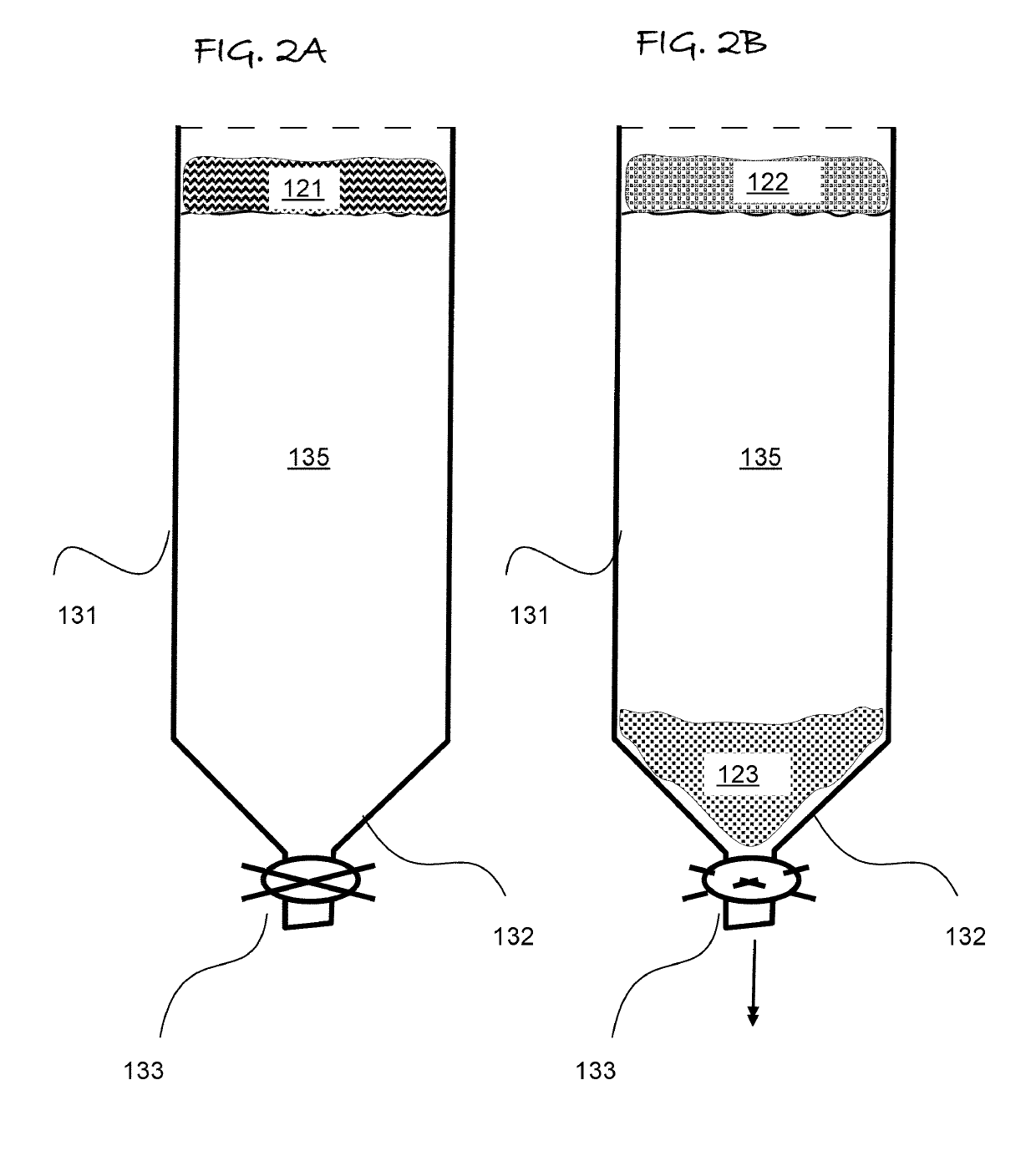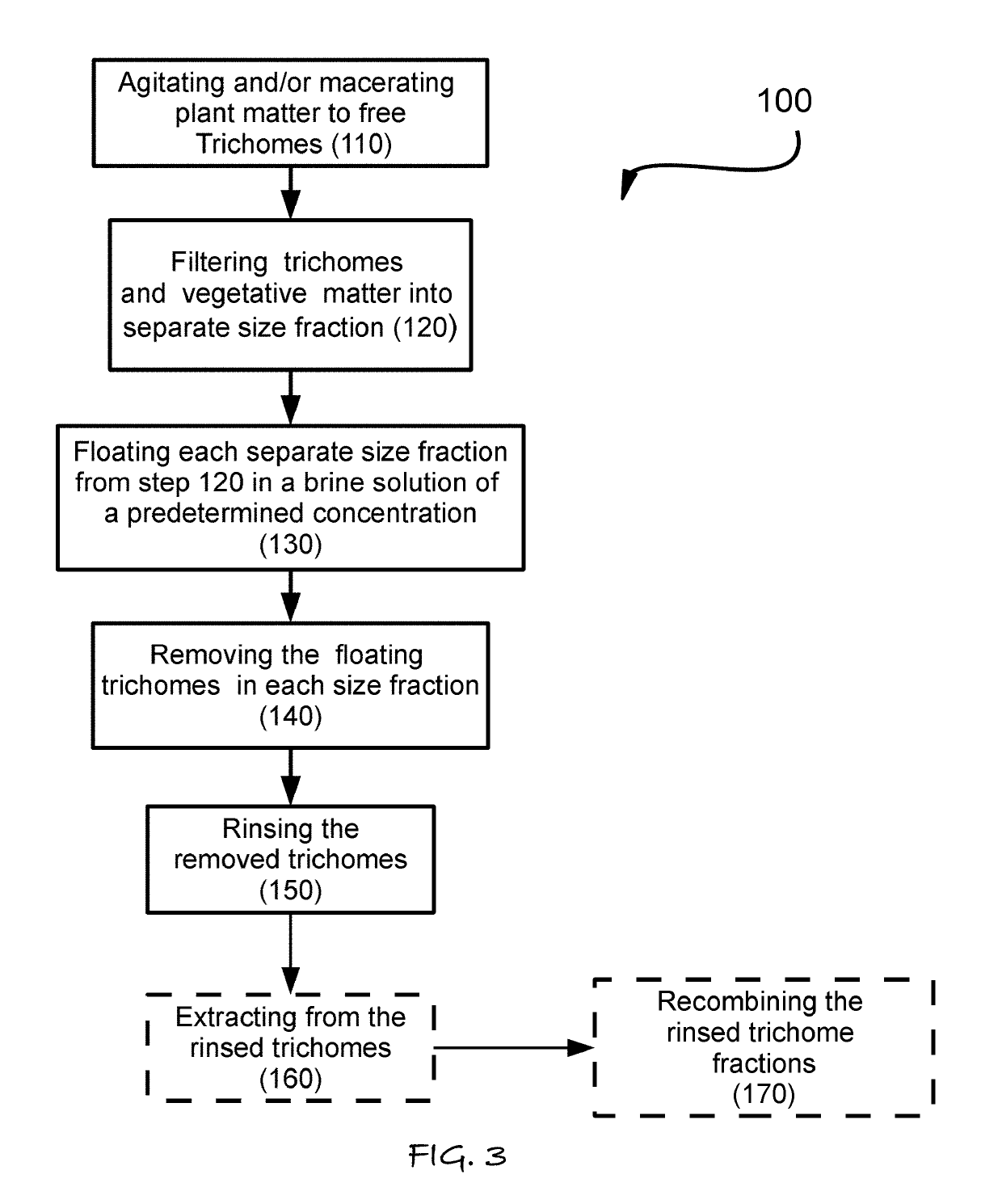Method of Plant Resin Separation and Extraction
a plant resin and extraction method technology, applied in the field of extraction of plant resins, can solve the problems of undesired compounds, high cost of conventional extraction methods, and insufficient preservation of volatile and/or oxidation-sensitive compounds
- Summary
- Abstract
- Description
- Claims
- Application Information
AI Technical Summary
Benefits of technology
Problems solved by technology
Method used
Image
Examples
Embodiment Construction
[0040]Referring to FIGS. 1-9, wherein like reference numerals refer to like components in the various views, there is illustrated therein a new and improved Method of Plant Resin Separation and Extraction, generally denominated 100 herein.
[0041]In accordance with the present invention, processes 100 of FIGS. 1,3 and 6-9 comprise a series of steps for separating resin rich glandular trichomes from vegetative matter. Terpenoids including cannabinoids and other compounds secreted within glandular trichomes have significant commercial applications. Glandular trichomes occur most abundantly on the floral calyxes and associated leaves on the inflorescences of female Cannabis plants. The secreted compounds frequently remain in and swell the trichome glands, which are cell clusters, giving them a resinous character.
[0042]The particular, sieve sizes, methods of agitation, sieve fractions deployed in one or more separation processes in step 110-130 will depend on the nature of the target glan...
PUM
 Login to View More
Login to View More Abstract
Description
Claims
Application Information
 Login to View More
Login to View More - R&D
- Intellectual Property
- Life Sciences
- Materials
- Tech Scout
- Unparalleled Data Quality
- Higher Quality Content
- 60% Fewer Hallucinations
Browse by: Latest US Patents, China's latest patents, Technical Efficacy Thesaurus, Application Domain, Technology Topic, Popular Technical Reports.
© 2025 PatSnap. All rights reserved.Legal|Privacy policy|Modern Slavery Act Transparency Statement|Sitemap|About US| Contact US: help@patsnap.com



